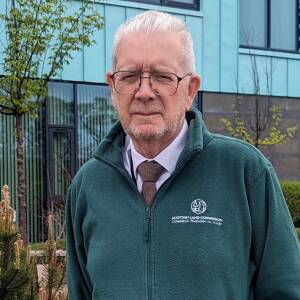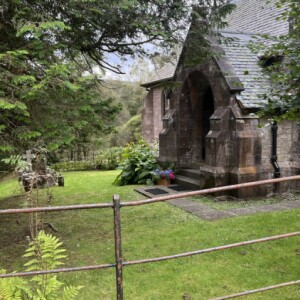Stained glass on a hillside
The owner of the remarkable little St Sofia"s Chapel Cottage has been holding a couple of open days and Cathleen and I went up to it this morning, having not been there for almost twenty years.
The chapel , now a private house, dates from 1912. It was designed by W Hunter McNab and commissioned by the London surgeon Harrison Cripps for his second wife, an Italian opera singer called Guile Ravogli. Harrison Cripps was the uncle of the Labour post second world war Chancellor Sir Stafford Cripps - in fact a double uncle because Stafford Cripps' father and mother were brother and sister to Harrison Cripps and his first wife.
The chapel sits on a hillside above what would have been the site of Glendaruel House , which Cripps owned. Glendaruel House remained in the Cripps family after Harrison died in 1923 but was sold in the 1940s, later becoming the Highland Hotel which was destroyed by fire in 1970 .
Where it stood is now the Glendaruel Caravan Park whilst just across the glen the current Glendaruel Village Hall was originally built to accommodate the men building the house, from the Helensburgh firm of Trail, and was then given by Cripps to the community.
I have posted an outside shot of the chapel as my first extra photo and it is a lovely and unexpected building to come across amidst the trees. My second is Cripps' grave.
However the chapel's real glory is the stained glass, which is in four of the windows.
Who the dedicatees are of this representation of The Annunciation is not known but the current owner, who has done some research and who is also caring very lovingly for the building, , believes that the glass was made by the prominent and prolific London firm of Clayton and Bell though as their records were destroyed in the war it would be impossible to be certain without deep research in whatever Cripps family papers are left.
There is much that is hidden or little known in Glendaruel - this, the "Lucknow Gate" which I have blipped before and the Kilmodan stones to name but three things that come to mind.
I suspect the same is true in almost every rural parish in Scotland, which should spur us all on to know more about where we live better than we often do.



Comments
Sign in or get an account to comment.


